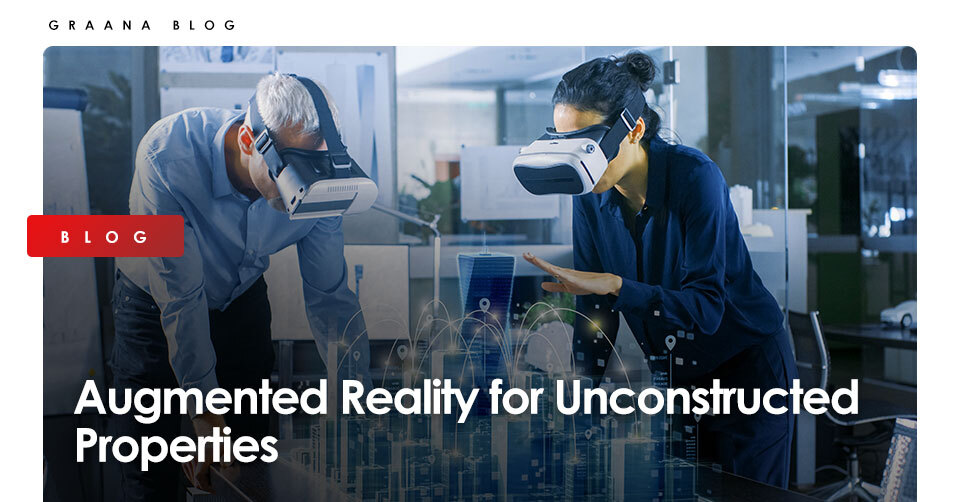
The rapid adoption of technologies and innovations in real estate has fundamentally altered how the real estate industry operates. Real estate companies worldwide are undergoing a very dynamic digital acceleration process. Proptech has completely changed how we rent, buy and sell properties. Augmented Reality (AR) is one of the game-changing technologies that has transformed this sector. It combines advanced visualisation technology to improve or depict real-world situations, allowing new ways to interact. It’s a new, adaptable technology that’s quickly gaining popularity in the market because of its wide range of applications. The border between reality and technology is blurred in augmented reality, giving the client an integrated and smooth user experience.
Augmented reality provides many benefits to buyers, sellers and realtors. The property’s overall feel isn’t captured in images. Furthermore, while 3D models can be interactive, they do not provide a complete representation. Touring a property is not always feasible due to lack of time or distance from the location. These issues are addressed by augmented reality, which provides buyers with a comprehensive perspective of the property.
One of the most exciting features AR brings into the real estate industry is its use for unconstructed properties. AR is an excellent tool for presenting properties still under construction.
Graana.com brings you a list of benefits AR provides for unconstructed properties:
Augmented Reality allows realtors to present the unfinished buildings better than just plain drawings or models. It gives life to architectural plans and makes them understandable for a layman. It shows grey structures into fully-functional homes. It can better exhibit how it will look once the project is completed. It helps realtors invite buyers to use the technology to customise the property under construction. They can see how the interior would appear with their preferred style already in place. People can play with the colours, furniture, light, and space utilisation using AR. Also, for commercial projects, AR allows seeing how a shopping mall or a co-working space etc., would look like after its completion. It helps to understand the utilisation and usage of space.
Augmented Reality allows more precision during construction. It is difficult to point out errors on a construction plan/drawing as compared to a comprehensive augmented reality display. It provides better visualisation to architects and construction engineers. They can monitor the progress and improvise anything at the very start of the construction process. It can also assist the on-site team in detecting architectural or structural errors before a small mistake turns into a huge error. It leads to improved results with concerns already addressed during the process, saving both time and money. It also reduces the likelihood of extensive rework once the project is completed.
Often, investors are confused about how the final product will look like and remain anxious if their investment is worth it or not. Augmented Reality helps realtors present their vision to the investors in a more substantial manner, whether it is a house, school, commercial area or a residential complex. AR lets the investor understand the whole vision and vibe of the place. Real estate marketers can utilise augmented reality to turn a patch of land into a completely furnished property to anchor their visions in digital reality.
The construction process is highly collaborative and demands thorough communication between all team members. AR allows seamless communication and transparency between all team members to share real-time updates. It keeps all team members on the same page. Team members not on-site can also see the progress remotely and suggest changes. It allows for real-time problem solving and error correction without limitations of all team members being present on-site at all times. This can help in rapid problem-solving and a fast pace of work.
Through the power of visualisation, investors can picturise what they are spending their money on. They can make a more well-informed decision keeping in mind all the factors. This leads to better decision-making and trust-building between realtors and investors, leading to better closing of deals.
ISLAMABAD: The federal government is set to inaugurate the Islamabad Information Technology Park on August…
Lahore, April 23, 2025 – The city of Lahore has successfully completed the construction of…
ISLAMABAD, Pakistan – April 23, 2025 – Chaaye Khana, Pakistan's popular cafe renowned for its…
ISLAMABAD: Prime Minister Shehbaz Sharif laid the foundation stone for the Murree Road underpass on…
DUBAI: Pakistani real estate developers and representatives showcased a range of commercial and residential investment…
ISLAMABAD: Capital Development Authority (CDA) is currently undertaking a major Rs652 million project to upgrade…